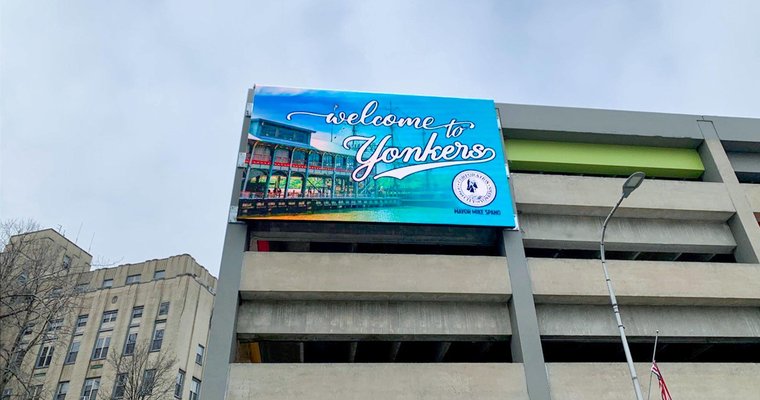There’s no doubt that out-of-home (OOH) advertising has enjoyed exceptional growth of late, especially as it recovers from the impact of the Coronavirus pandemic and its associated lockdowns.
To this end, the total OOH ad spend in the UK recently peaked at £901 million, while this figure is poised to grow by a staggering 31.5% by the end of 2022.
However, there are many forms of OOH media available to marketers, and it’s important to create a viable and cohesive strategy as part of a wider advertising plan.
So, let’s take a look at how you can create an effective OOH advertising strategy, by touching on its key components.
Choosing Your Preferred Media
Integrated marketing strategies are arguably the most effective in the modern age, thanks to their ability to mirror the typical consumer journey and assist a high rate of conversions throughout.
When focusing on the cultivation of an outdoor advertising strategy, it’s similarly important to integrate different types of OOH media, based on the observed behaviour of your customers and the core demographics that drive demand for your products or services.
So, here’s a glimpse at the available media and the core purpose of each one. Let’s get into it!
#1. Billboards: Billboards dominate the OOH market, thanks to their variable dimensions and ability to target customers in high footfall areas. Large, 48 and 96-sheet classic billboards can be particularly effective when erected at strategic roadside locations, with some 71% of drivers regularly looking at the messages on such media. The rise of digital out-of-home (DOOH) media has also created a generation of animated and interactive billboards, which leverage LED screens and lighting to drive increasingly creative campaigns.
#2. Transit Ads: As the name suggests, transit ads describe posters and examples of signage that are placed on buses, subways, cabs and bus stations. This type of media is particularly popular in bustling city locations and commuter hubs, as it can engage customers as they travel to and from work or when they’re increasingly motivated to interact with certain brands. In the case of transit ads on buses and trains, this media also helps to mobilise your messaging within target locations.
#3. Outdoor Events and Hoardings: You can also promote your products and services at busy outdoor events, such as relevant product demos, launches or even mini-concerts. This effectively immerses customers and engages them as part of your marketing campaigns: it’s quite experiential in nature. Similarly, you can target the hoardings that often surround construction sites in busy locations, which create opportunistic marketing opportunities and help you to connect with a large number of potential customers.
#4. Point of Sale (POS) Advertising: Last, but not least, we come to POS advertising. This type of media is placed strategically around busy and interactive points of sale (both on and offline), enabling brands to solicit impulse purchases and potentially optimise the value of their customer’s average basket. Incredibly, some 78.2% of UK adults have succumbed to impulsive buys when shopping online, with the average value of this type of transaction amounting to £32.69.
Researching Your Target Audience
Every successful OOH campaign relies on detailed and insightful research, particularly pertaining to your chosen locations and the specific demographics that you’re hoping to target.
This same rule applies online. For example, you wouldn’t use a generic combination of social media channels as part of your social marketing strategy as each one offers different types of communication and access to wildly variable demographics.
For example, social sites like Pinterest are dominated by females, while it’s interesting to note that 54% of LinkedIn’s user base is male.
Similarly, different demographics of people will typically attend alternative locations when they spend their time out-of-home. For example, customers of working age will often pass through busy central and commuter hubs on a daily basis, whereas older citizens may spend more time at shopping centres or retail parks.
So, you’ll need to research your target market and collate data on an existing customer base, in order to define and segment your main demographics accurately.
Then, you can begin to target different locations and the most relevant type of OOH media for your campaigns, while also tailoring content and creating message variations to optimise lead generation and bottom-line conversions over time.
The process of customer and market research should also review the techniques and strategies used by your competitors.
After all, this enables you to determine any competitive advantages (or disadvantages) that you may have in comparison, while helping to hone your strategies and wider marketing techniques.
Choose Your Location (or Locations)
As we’ve already touched on, location is key when building your OOH marketing campaign.
Make no mistake; where an individual ad or billboard is situated geographically will determine its effectiveness, both in terms of the number of impressions it generates and its ability to target a specific audience.
To explore this in more detail, we’ve listed some of the key questions and considerations below, which should apply regardless of your business and the product or service that you’re marketing.
#1. Will the Ad Receive the Necessary Footfall? Ultimately, busy central locations afford you access to the largest audience, while also coming at an increased price premium. However, if you’re targeting a niche audience through your campaign, you may want to consider more strategic and affordable locations.
#2. Is There Any Local Context? Not all locations are created equal, and some may offer a particularly relevant, local context. This could add value to seemingly unappealing and low-cost locations, as it frames your product or brand in a particularly favourable light.
#3. Does The Surrounding Area Work with Your Creative? If your ad has been designed using targeted or branded colours, you’ll need to ensure that they don’t blend into the surrounding landscape. Similarly, you should have created the right font and text size to optimise visibility, especially when erecting larger ads that will be viewed at distance.
#4. How Visible is Your Ad? From a practical perspective, you’ll also need to ensure that the content is visible from wherever viewers are likely to be located, whether this is the road, pavement or a bus shelter. This means ensuring that it’s free from physical obstructions, which could restrict visibility and minimise the long-term exposure of the ad.
These considerations, along with the findings of your target market research and demographic segmentation, can help create more effective campaigns that optimise the impact of individual ads.
Produce Unique (But Smart) Creatives
The point of any advertising media should be to promote a clear message, which includes a concise call-to-action that compels and engages customers.
So, while there’s nothing wrong with investing in highly advanced or interactive creative using mediums like DOOH, such media must also be underpinned by smart and informed elements that work well in practice.
For product-oriented brands, it’s certainly fair to surmise that emotional ad content performs better than a rational alternative. In fact, one study showed that 31% of ads with an emotional hook succeeded in engaging customers, compared with just 16% for rational messages.
So, producing creative with an emotional pull appears to be more effective when looking to drive sales conversions.
But what other factors do you need to keep in mind? Here’s a summary of the most important:
#1. Consider the Layout: The layout and structure of your ad is crucial, especially when dealing with small billboards or posters. Applying the so-called “rule of thirds” can help here, as this requires you to divide your canvas into three equally sized vertical and horizontal sections. This creates a grid and a clear roadmap for your headline, messaging and visuals, including branding and any relevant imagery.
#2. Be Concise with Your Messaging: Whether you’re aiming to attract passing footfall or road traffic, the average viewable bulletin is estimated to be around seven seconds in length. This means that every design element counts, so it’s recommended that you’re concise with your messaging and restrict your headline size to three words or fewer. For all written messages, aim for a cap of seven words and write in an active tense where possible to create a sense of urgency.
#3. Pay Attention to Font Size: We’ve already touched on font size, but as a general rule, you’ll need to factor in one inch of letter or character height for every 10 feet of viewing distance. Similarly, opt for sans serif fonts like Arial, Calibri and Verdana when selecting your font, as these examples are easily intelligible, modern and simple, and therefore easy to comprehend at distance.
Remember the Importance of Brand Identity
When building out your creatives, one of the best ways to guarantee a unique ad that drives brand awareness (and recognition) is to build it on your existing brand identity.
This means including primary, secondary and (where relevant) tertiary brand colours throughout, with this type of subtle branding exercise helping customers to immediately associate an ad with your products or services.
You should also incorporate your logo into all outdoor ads and media, as this provides a visual reminder of your involvement and helps to engage new customers who aren’t as familiar with the brand.
It’s also important to apply your brand identity consistently across multiple channels, both on and offline. This is especially important if you want to drive recognition within your integrated campaigns, while it can also underpin a consistent message however customers engage with your brand.
Similarly, consistent branding helps to optimise the customer experience, particularly one that unfolds across a number of different channels!
In Conclusion – The Key Takeaways
So, there you have it; our comprehensive guide to creating effective outdoor ad campaigns. By building your campaigns on these fundamental pillars, you can optimise your chances of success and achieving your underlying marketing objectives over time.
Before we go, we also thought we’d summarise three important takeaways and potential tips for your next campaign! These include:
#1. Choose Areas with High Traffic: While you should always advertise in locations that optimise your reach among target customers, it’s generally advised to prioritise areas that boast high levels of traffic and footfall.
#2. Create Unique and Eye-Catching Ads: Creating unique and attention-grabbing visuals is key to engaging customers, but be sure to ensure that ads are functional, suitably branded and capable of achieving their underlying objectives.
#3. Focus on the Customers: On a final note, ensure that your entire ad or campaign is built from a customer-centric perspective. This will help to maximise your ad’s exposure and ensure that it actively engages as many members of your target audience as possible.
The post How to Create an Effective Outdoor Media Strategy appeared first on 75Media.






